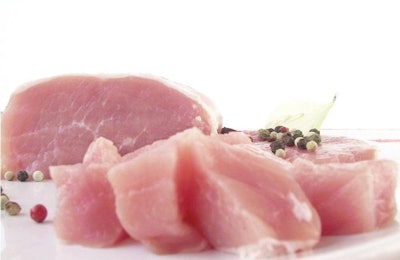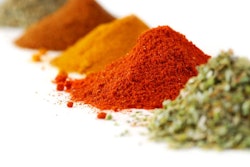
Meat quality can be improved by feeding animals the right feed additives, according to Alltech research scientist Rebecca Delles, who spoke at the ONE18: The Alltech Ideas Conference in Lexington, Kentucky in May.
Antioxidants and organic trace minerals fed to pigs benefit meat quality after slaughter, and create no change in performance of the animal during its life, Delles said. Antioxidants delay color loss, minimize off-flavor formation and maintain palatability of the meat. Organic trace minerals have greater bioavailability than inorganic trace minerals and can be used in smaller amounts without compromising animal health, performance or quality. Inorganic trace minerals destroy fat-soluble vitamins in the diet and lead to oxidative stress in the animal.
Inorganic vs. organic trace minerals
In studies that Delles cited, pigs were fed either a diet of inorganic trace minerals at National Research Council (NRC) levels or a diet of organic trace minerals at 30 percent NRC levels. In the meat from the pigs fed the organic trace minerals, there was lower protein oxidation, less purge loss and cooking loss, and the meat was darker and redder in color than the meat from the pigs fed the inorganic trace mineral diet.
“The organic trace minerals were actually working with the animal’s own body, helping its defense mechanism to fight off free radicals,” Delles said, resulting in unoxidized meat that is uniform and has better water-holding capacity, making it more tender.
Delles also said that, in the pigs fed the organic trace mineral diet, there were changes in protein expression. There was an increase in annexin A1, which is associated with an increase in proteolysis, leading to a more tender meat product; an increase in glycerol-3-phosphate dehydrogenase, which is associated with color stability; and an increase in creatine kinase, which is associated with antioxidant function.
What kind of antioxidants should be fed?
Delles said there are several kinds of antioxidants that can be fed to slow the oxidation process, including vitamin E, vitamin C, essential oils, carotenoids and polyphenols. She said that by increasing the amount of vitamin E fed to the pig, producers can reduce the amount of lipid oxidation and increase palatability of the meat.
“The type of antioxidant you use will matter in the end for when we’re talking about meat quality,” she said.

















